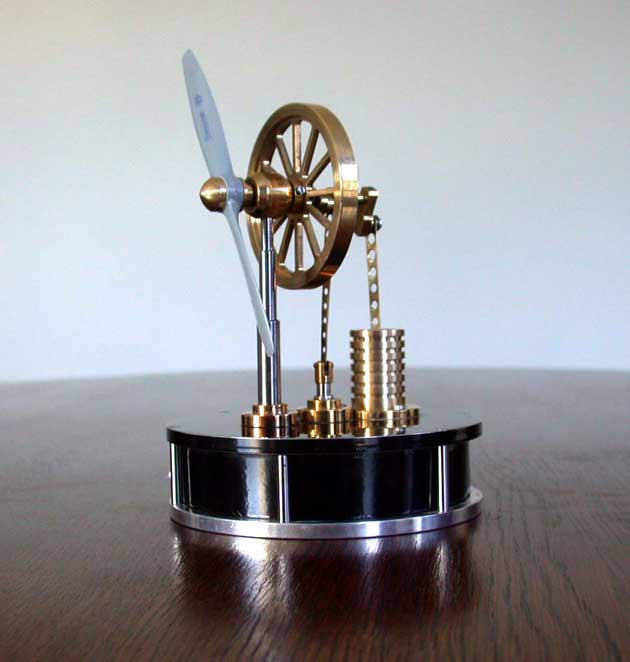| The Stirling Engine Austin Hunt Physics212 web project 2011 4/27/2011 Many types of engines and motors have been used throughout history to accomplish all kinds of work. Internal combustion engines are what most people think of when they hear "engine" but these are not the only engines. Steam engines were widely used in locomotives, factories, and mining. The use of internal combustion engines today, ranges from lawn mowers to aviation. Electric motors are also common in everyday life as power tools and in reverse operation as generators. A less familiar engine making its debut as a tool in big industries, formerly a novelty, is the Stirling engine. Basic Engine |
 |
The "Stirling Engine" in thermodynamic terms, is a heat engine. In short, it takes heat from one reservoir, transfers a portion of the heat to work, and dumps the rest to a cold reservoir. You may be thinking this is too easy or too good to be true. Not so. All you need is two thermal reservoirs at different temperatures, such as a candle and the relatively cool air inside your house.
The Stirling Cycle
These engines, like any other have both good and bad traits for every application. A couple industries are starting to make significant improvements to their efficiency and overall performance by using the sterling engine. There are drawbacks to using large scale Stirling engines, but in some cases they are a clear winner.
Real world applications
Who came up with this engine? Why have I never heard of it?
History and more...
Can i buy one of these engines or make one? The answer is yes. Decide what kind of budget you have and what your fabrication skills are and 'go for it,' or buy one.
Projects and suggestions
Where can I learn more about these engines? Information found on these pages and additional links can be found below.
Bibliography and links